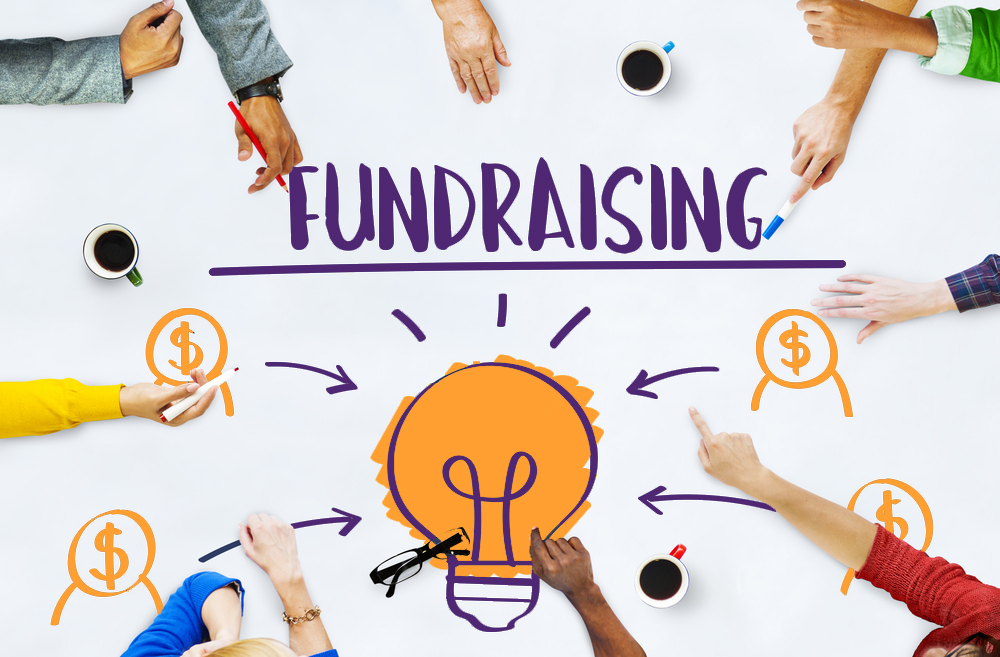Leading Nonprofit Fundraising Ideas: Ingenious Approaches to Raise More Funds
Leading Nonprofit Fundraising Ideas: Ingenious Approaches to Raise More Funds
Blog Article
The Function of Area Engagement in Nonprofit Fundraising: Structure Lasting Relationships for Sustainable Assistance
Neighborhood involvement is progressively identified as a critical component of successful not-for-profit fundraising. By promoting authentic partnerships with neighborhood stakeholders, organizations can grow depend on and commitment, which are important for lasting support. However, the techniques and strategies utilized to involve areas vary widely, increasing essential inquiries about efficiency and impact. What are the best techniques for cultivating these vital links, and just how can nonprofits determine their success in this sector? Comprehending these characteristics can substantially affect the future of fundraising efforts and the overall mission of nonprofit companies.
Comprehending Area Involvement
Area interaction is a crucial element of successful not-for-profit fundraising efforts. Nonprofits must determine essential stakeholders-- such as community members, regional services, and various other companies-- to create efficient involvement methods.
Effective area involvement is asserted on active listening and responsiveness to the demands and passions of the community. This procedure entails getting feedback, understanding neighborhood dynamics, and making sure that the organization's objective aligns with regional priorities. Involving the area can take different forms, including public conferences, volunteer chances, and collaboration initiatives, each made to encourage participation and investment in the company's goals.
Furthermore, area engagement need to be come close to as a recurring discussion rather than a single initiative. By cultivating an inclusive atmosphere where community voices are heard and valued, nonprofits can construct a strong structure for future fundraising endeavors. Ultimately, a deep understanding of community engagement empowers companies to create authentic connections that enhance their general efficiency and sustainability.
Benefits of Strong Relationships
Strong connections created with neighborhood engagement yield various benefits for nonprofit fundraising efforts. Most importantly, these relationships foster trust fund and integrity, essential components in motivating benefactors to contribute. When potential fans see a not-for-profit actively associated with their area, they are most likely to rely on its objective and effect.

Furthermore, these connections facilitate efficient communication. Nonprofits can leverage their links to share stories of effect, updates, and requires, ensuring that fans remain enlightened and engaged. This open line of communication not only reinforces bonds yet likewise urges word-of-mouth promotion, increasing the nonprofit's reach.
Lastly, solid community ties can bring in new companions and sponsors. People and services are a lot more inclined to line up with organizations that demonstrate purposeful neighborhood participation, offering added resources and assistance that can considerably boost fundraising abilities. Hence, growing robust relationships with area interaction is integral to a nonprofit's long-lasting fundraising success.
Strategies for Efficient Engagement
Exactly how can nonprofits efficiently engage their neighborhoods to boost fundraising efforts? Creating targeted approaches is vital for cultivating significant links. Initially, leveraging social networks platforms enables companies to share their goal dynamically and interactively, getting to a more comprehensive audience. Regular updates, involving web content, and calls-to-action can galvanize neighborhood interest and participation.
Second, holding neighborhood occasions, such as workshops, volunteer chances, or fundraising drives, helps with in person communication, permitting nonprofits to display their influence and efforts. These events not only increase funds but also grow connections and allow area members to involve directly with the cause.
Third, executing customized communication techniques can improve engagement. Customizing messages to specific contributor sectors based on interests and previous contributions cultivates a feeling of belonging and financial investment in the company's mission.
Lastly, creating partnerships with regional businesses and neighborhood leaders can magnify outreach efforts. Collaborative efforts can boost exposure and credibility, showing a collective commitment to the community's wellness. By incorporating these strategies, nonprofits can develop long-term relationships that improve fundraising initiatives and drive sustainable support.
Gauging Engagement Success
While engaging the neighborhood is crucial for successful not-for-profit fundraising, gauging the efficiency of these interaction efforts is similarly important. Developing clear metrics permits organizations to examine just how well they are getting in touch with their audience and attaining their fundraising objectives. Key performance signs (KPIs) such as donor retention rates, volunteer involvement levels, and interaction on social networks platforms provide substantial information for assessment.

Regularly assessing these metrics enables organizations to pivot their strategies when essential, making certain that neighborhood involvement remains straightened with their overall objective. Furthermore, sharing these results with stakeholders fundraising consultant cultivates transparency and constructs trust fund, motivating additional area involvement. Inevitably, a durable measurement framework not just informs future fundraising campaigns yet also strengthens the relationship in between the not-for-profit and its advocates, preparing for lasting success.
Case Research Studies in Area Effect
Many study show the extensive effect that neighborhood involvement can have on nonprofit fundraising success. One notable instance is the "Food for Idea" effort, where a local food financial institution partnered with businesses and institutions to host neighborhood dinners. These occasions not just increased funds but likewise fostered a sense of belonging among participants, dramatically increasing benefactor retention rates.
Another engaging case is the "Environment-friendly Spaces Task," which included regional residents in the revitalization of city parks. This initiative not only gathered monetary support from local services yet additionally cultivated a volunteer base that added to ongoing upkeep and programming. The sense of ownership and pride amongst neighborhood members equated right into continual payments.
In the world of arts, the "Art for All" project successfully involved neighborhood musicians and clients to produce collaborative art setups, resulting in boosted presence and donations for a neighborhood arts not-for-profit.
These instances highlight that when nonprofits prioritize area participation, they can produce lasting connections that improve fundraising efforts, ensuring lasting assistance and cultivating a lively community culture. Such instances demonstrate that neighborhood engagement is not just an approach yet an important column of not-for-profit success.
Final Thought
In verdict, community engagement is essential to the success of not-for-profit fundraising initiatives. Ultimately, a durable structure of area support not just intensifies fundraising potential but likewise cultivates a society of collaboration, necessary for attaining long-term business goals and maintaining purposeful influence. fundraising consultant.
Nonprofits should identify essential stakeholders-- such as neighborhood participants, neighborhood companies, and various other organizations-- to develop reliable interaction techniques.

In final thought, community interaction is integral to the success of not-for-profit fundraising efforts.
Report this page